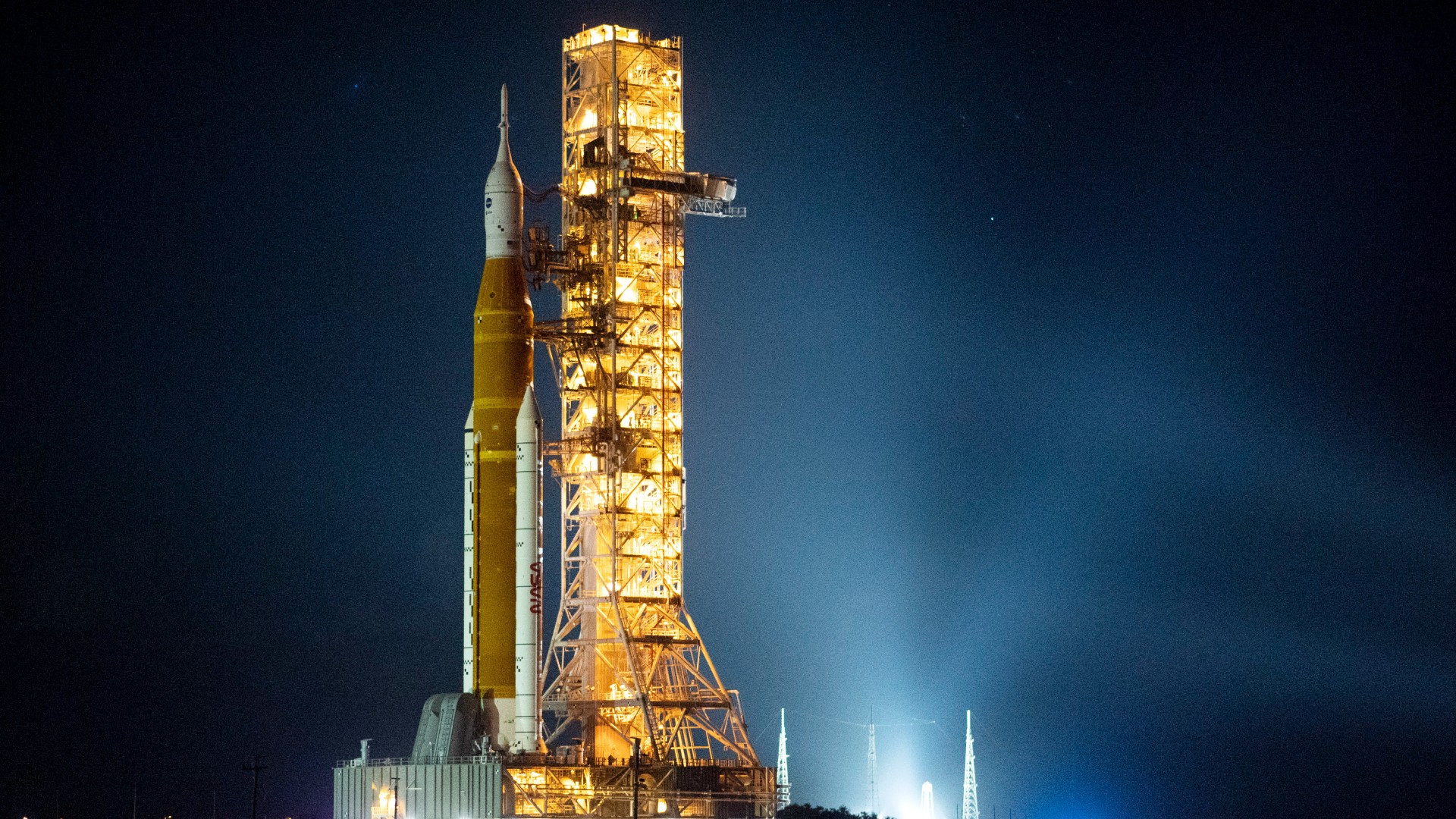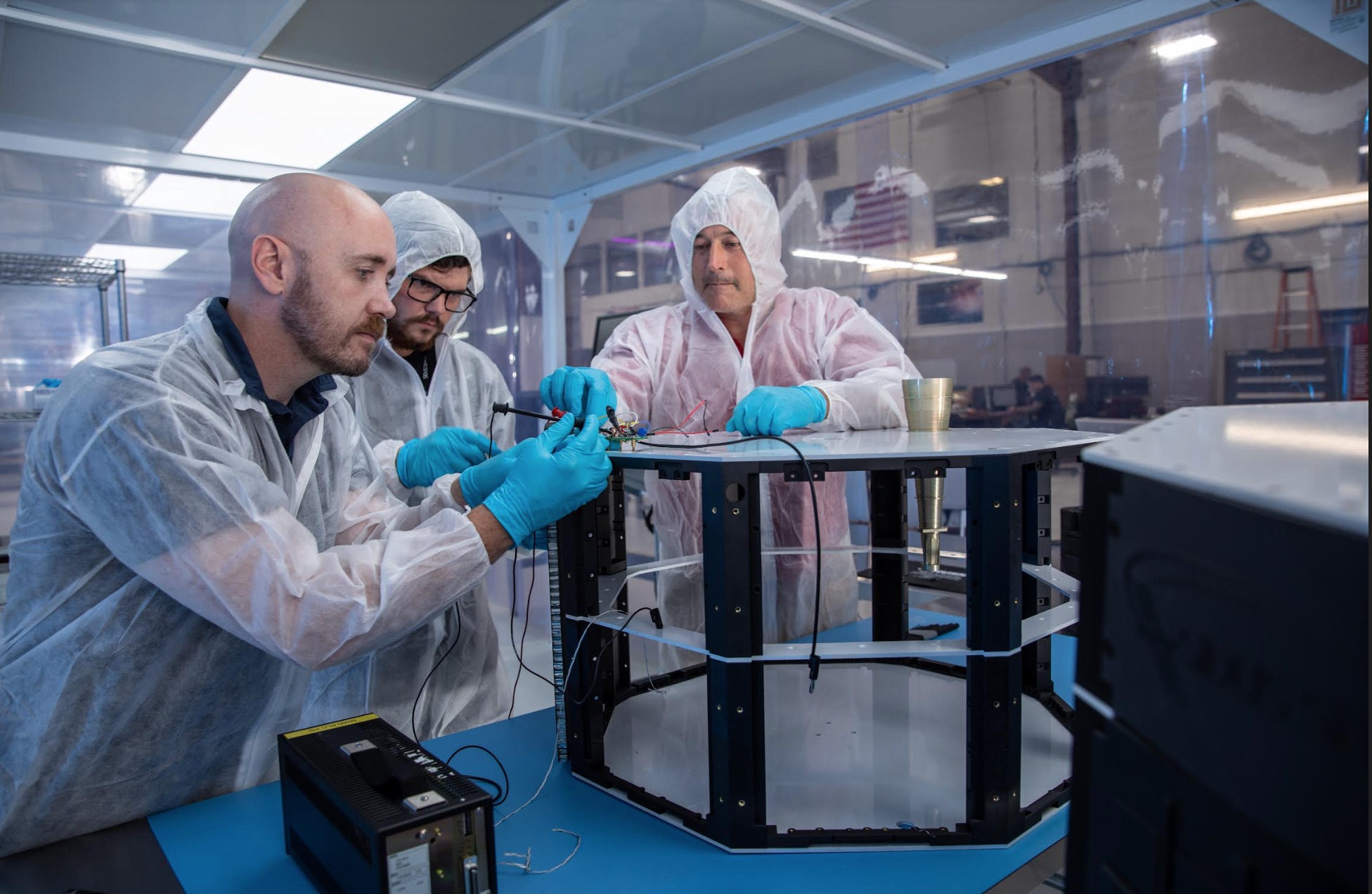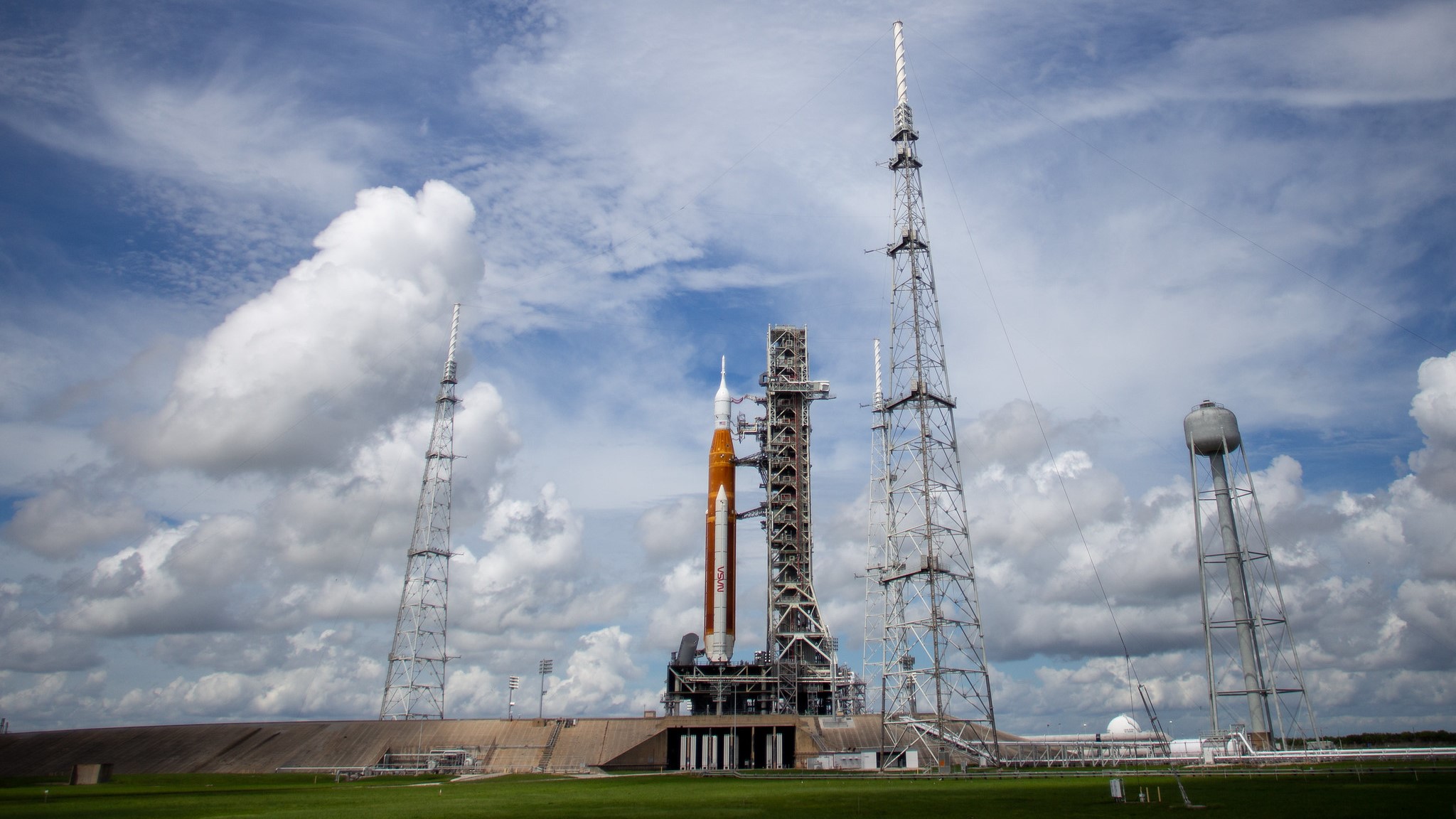NASA is already getting ready for future moon missions before its first Artemis launch is off the ground.
NASA’s mega moon rocket, Artemis 1, is set for another launch attempt Wednesday (Nov. 16). The mission’s hardware construction provided a business opportunity for dozens of aerospace firms and private contractors supporting the Space Launch System (SLS) rocket and Orion spacecraft.
One of those contractors is Sidus Space. The Florida-based company’s hardware is integrated into the SLS, Orion and the mobile launch tower that supports the Artemis 1 duo, among other key pieces of Artemis program infrastructure.
Related: Blood Moon rises over Artemis 1 megarocket preparing for launch in stunning photos
Carol Craig is the founder and CEO of Sidus Space, and is said to be the first female founder and owner of a space-based corporation to go public (that would be on the Nasdaq, for stock market watchers).
Space.com recently connected with the former Navy pilot to learn more about Sidus’ involvement in Artemis, the challenges of starting a female-owned space firm and the rewards of integrating Sidus’ hardware with NASA’s as the agency seeks to return humans to the moon.
Space.com: Can you explain what Artemis components Sidus was responsible for and what role they play in the SLS?
Carol Craig: Sidus has been a part of the program from the beginning, starting from when NASA transitioned the shuttle production line to the SLS. We had our hand in reconfiguring the systems and facilities that NASA uses to process and launch rockets and spacecraf. But more specifically, we designed, built, and tested electrical cabinets and the umbilical quick disconnects for the mobile launcher that carries the SLS from the hangar to the pad.
We also fabricated wire harnesses and cables for the Orion spacecraft that will be used to carry crew on top of the SLS. Additionally, we provided hardware for the core stage of the SLS and the solid rocket boosters, and ground support hardware for the Orion spacecraft.
Space.com: As the first female founder of a space company to go public, what pressures, obstacles, and rewards did that bring?
Craig: Before making the decision to go public, I looked real hard at the SPAC option [a special purpose acquisition company created especially for a merger] but in the end, I decided that it was not the best model for Sidus. Years of supporting the U.S. government for both defense and space efforts has resulted in a sense of transparency and focus on compliance that seemed to be better suited for the IPO [initial public offering that brings most companies public via a stock exchange]. My conservative nature also pushed me toward a lower raise [of money from investors] as opposed to the larger SPAC fundraising. And contrary to what many believe, the IPO process was much faster than what I saw with the SPAC transactions. The timeline from contract signing to IPO was less than 5 months.
The challenge, of course, was running the process myself as a ‘quarterback’ while managing two companies. But the advantage was the in-depth understanding of the process and — ultimately — the market into which we were entering. The reward is fairly obvious: we were able to raise funds initially, and put mechanisms in place for further fundraising as the space ecosystem grows, and our company scales in tandem with this emerging market.
And as an aside, I had no idea that there were so few women founders who had taken their company public until halfway through the process. I further didn’t know I was going to be the first solely founded and owned woman to take a space company public when I started the effort, but it is certainly an important milestone which will hopefully promote more diversity in the space market going forward.

Space.com: What do the Artemis missions represent to you, and why are they important?
Craig: Contributing to America’s return to the moon is a great honor. This is the next step for humanity — to establish an outpost beyond Earth’s orbit so that we can send people even farther into our universe. We have been rooted in this program from its very early stages, and understand the mission and the significance of our contributions. The expanse of engineering and technology development for Artemis is thrilling. We are preparing for a new lunar workforce and industry that has only been dreamed about before in science fiction.
Space.com: How did you first get interested in the space industry and what keeps you motivated?
Craig: In my early years, I was an avid reader of science fiction by authors such as Isaac Asimov and Ray Bradbury. When I was younger, I pictured being able to build my own robot to be my friend. After I was medically discharged from the Navy following a knee injury, I continued developing software as a consultant and incorporated my business. That led me to jobs with NASA and other customers needing support for their aerospace programs. I loved living on the beaches of Florida, which I was exposed to during flight school in Pensacola, so moving my family to one of the most famous beaches in Florida was a no-brainer.
One of the best parts of the last decade and a half has been watching launches out my back door, and supporting space missions through our government contracts. I have found myself completely absorbed by the ramifications of Artemis’ success, and equally taken by how our team at Sidus continues to invest in space innovations that develop the future of humankind in real time.

Space.com: What is your next major project and what are you most excited about going into 2023?
Craig: We are proud to be part of the Collins xEVA team in development and manufacturing of the next generation space suits to support ISS and Artemis, allowing humans to walk and explore the moon. Over the last 10 years, Sidus has been manufacturing space hardware and participating in every major space project. We are looking forward to playing a meaningful role in this exciting opportunity, continuing our legacy of creating new revenue streams through strong partnerships. This work is helping to launch a new workforce and industry on the surface of the moon.
Outside of the work we contract with NASA and supporting companies for Artemis, we are also embarking on our own journey to launch a constellation of our own small satellites to give the average ‘Earthling’ an opportunity to experiment within the environment of lower Earth orbit — and access space-based data that is impactful to their day-to-day business and life. Our strategy is focusing on increasing the demand downstream by starting with the end-user in mind.
Our constellation of 3D-printed ‘LizzieSats’ is positioned to both deploy as a sort of zero-gravity “maker space”, where customers prove out their payloads and/or utilize data collection from Sidus owned sensors through our ITU [International Telecommunications Union]-approved communications spectrum in real time. We have an agreement with SpaceX to start launching in Q1 2023, and what we are offering is truly revolutionary. Our multi-mission satellite for a multi-mission constellation provides a way for consumers to access space and space-based data at a pace never seen in our economy.

Space.com: How has working with NASA changed your life and outlook on the space program?
Craig: We have the tools, technology, and awareness to understand how our planet works because of space technology. From the first ‘blue marble’ image of Earth that was taken outside of our atmosphere decades ago, to the remote imagery and sensors that NOAA [the National Oceanic and Atmospheric Administration] relies on to predict hurricane seasons today, the work being done in space is critical to the survival of humankind. We are able to put the brightest minds to work on solving humanity’s hardest problems. It’s hard for me to imagine being anywhere else doing anything different. In a lot of ways, I believe this is my purpose. Everything that I was exposed to and learned along the way has brought me to this point with these amazing people. Space is our destiny.
Follow us on Twitter @Spacedotcom (opens in new tab) or on Facebook (opens in new tab).

